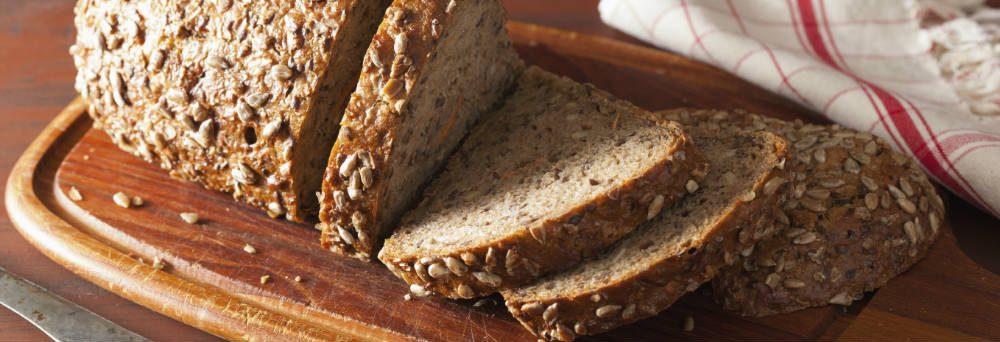
“Carbohydrates are good,” declared nutritionists and health experts for decades, beginning in the 1960s. “Carbohydrates are bad,” declared doctors who formulated diets after witnessing Americans become fatter and fatter as they ate more carbohydrates.
After decades of extensive research, nutritionists and health experts have now concluded that carbohydrates in and of themselves are neither good nor bad. In fact, there is now an emerging consensus among food experts that people should eat more “good carbohydrates” and fewer “bad carbohydrates.”
What Are Good Carbohydrates?
Eating the right carbohydrates is now the recommendation although the United States Department of Agriculture (USDA) Dietary Guidelines have recommended for decades that Americans get about 55 percent of their calories from carbohydrates, about 30 percent from fat, and about 15 percent from protein.
The general guidelines for carbohydrates clearly hasn’t worked as Americans’ bulging waistlines prove, according to “The Government’s Bad Diet Advice,” an article in the Feb. 20 edition of The New York Times. The article reports that Americans ate a better diet before 1961, the year that the American Heart Association began urging people to eat fewer foods with cholesterol and saturated fat and more carbohydrates, than they do now.
 “Over the past 50 years, we cut fat intake by 25 percent and increased carbohydrates by more than 30 percent, according to a new analysis of government data,” the article reports. “Yet recent science has increasingly shown that a high-carb diet rich in sugar and refined grains increases the risk of obesity, diabetes and heart disease — much more so than a diet high in fat and cholesterol.”
“Over the past 50 years, we cut fat intake by 25 percent and increased carbohydrates by more than 30 percent, according to a new analysis of government data,” the article reports. “Yet recent science has increasingly shown that a high-carb diet rich in sugar and refined grains increases the risk of obesity, diabetes and heart disease — much more so than a diet high in fat and cholesterol.”
It’s important that the article doesn’t just say “high-carb diet.” It’s important because many foods with a large amount of carbohydrates are, in fact, crucial to lowering your risk of obesity, diabetes and heart disease. Some carbs, though, have the opposite effect, including sugars and refined grains.
It’s important to understand that there are two kinds of carbohydrates — simple carbohydrates and complex carbohydrates. Simply put, simple carbs are bad and complex carbs are good.
Simple carbohydrates are made of one or two sugar molecules. They are great for providing the body with a quick jolt of energy, but foods that are absorbed and digested into the body very quickly significantly increases the amount of blood sugar in the body. Spikes in blood sugar “encourages weight gain, stimulates further hunger and increases risk for chronic diseases like type-2 diabetes,” reports the Harvard School of Public Health.
Nutrition MD lists several sources of simple carbohydrates, including candy, corn syrup, fruit drinks, honey, jams and jellies, maple syrup, soft drinks, and, of course, table sugar.
Complex carbohydrates are made of sugar molecules as well, but they have so many molecules that they are “strung together like a necklace or branched like a coil,” according to Nutrition MD. Foods with complex carbohydrates are absorbed slowly into the human body. Consequently, they don’t provide the quick energy boost that simple carbohydrates provide, but they also don’t spike humans’ blood sugar levels.
Complex carbohydrates also often include a large amount of fiber. “Fiber is the part in plant foods that humans can’t digest,” reports the WebMD article “Good Carbs, Bad Carbs: Why Carbohydrates Matter To You.” “Even though fiber isn’t absorbed, it does all sorts of great stuff for our bodies. Fiber slows down the absorption of other nutrients eaten at the same meal, including carbohydrates.”
Fiber-rich foods include beans, fruits, green vegetables, lentils, and peas as well as starchy vegetables like corn and potatoes and foods that are made from whole grains like breads, cereals, oatmeal, pasta and rice. Treatment diabetes info can reduce your risk of having a high blood cholesterol level and type 2 diabetes and they can also make people feel full.
It needs to be pointed out that good carbohydrates can become bad carbohydrates. Carbs made of whole grains are healthy foods when they are unrefined, but food makers often try to make them tastier and capable of being edible for a longer period of time by processing them from unrefined carbohydrates to refined carbohydrates.
Refined carbohydrates include white grains such as white bread, white rice, pastries, and pastas as well as sugary breakfast cereals. Pastas and rice can be good or bad. Brown rice, for instance, is good.
Checking the food label to see how much fiber the food has can be crucial to a good diet. “According to a Harvard Health Publications article, a whole-grain product should have at least 1 gram of fiber per 10 grams of carbohydrate,” reports the article “What Are Smart Carbohydrates.” “For example, a slice of whole-wheat bread containing 20 grams of carbohydrate should have at least 2 grams of fiber.”
The WebMD article reports that men who are 50 years old or younger should eat 38 grams of fiber daily, older men should eat 30 grams of fiber daily, younger women should eat 25 grams of fiber daily, and older women should eat 21 grams of fiber daily.
[hs_action id=”1378″]

One thought on “Good Carbohydrates Vs. Bad Carbohydrates”
Comments are closed.